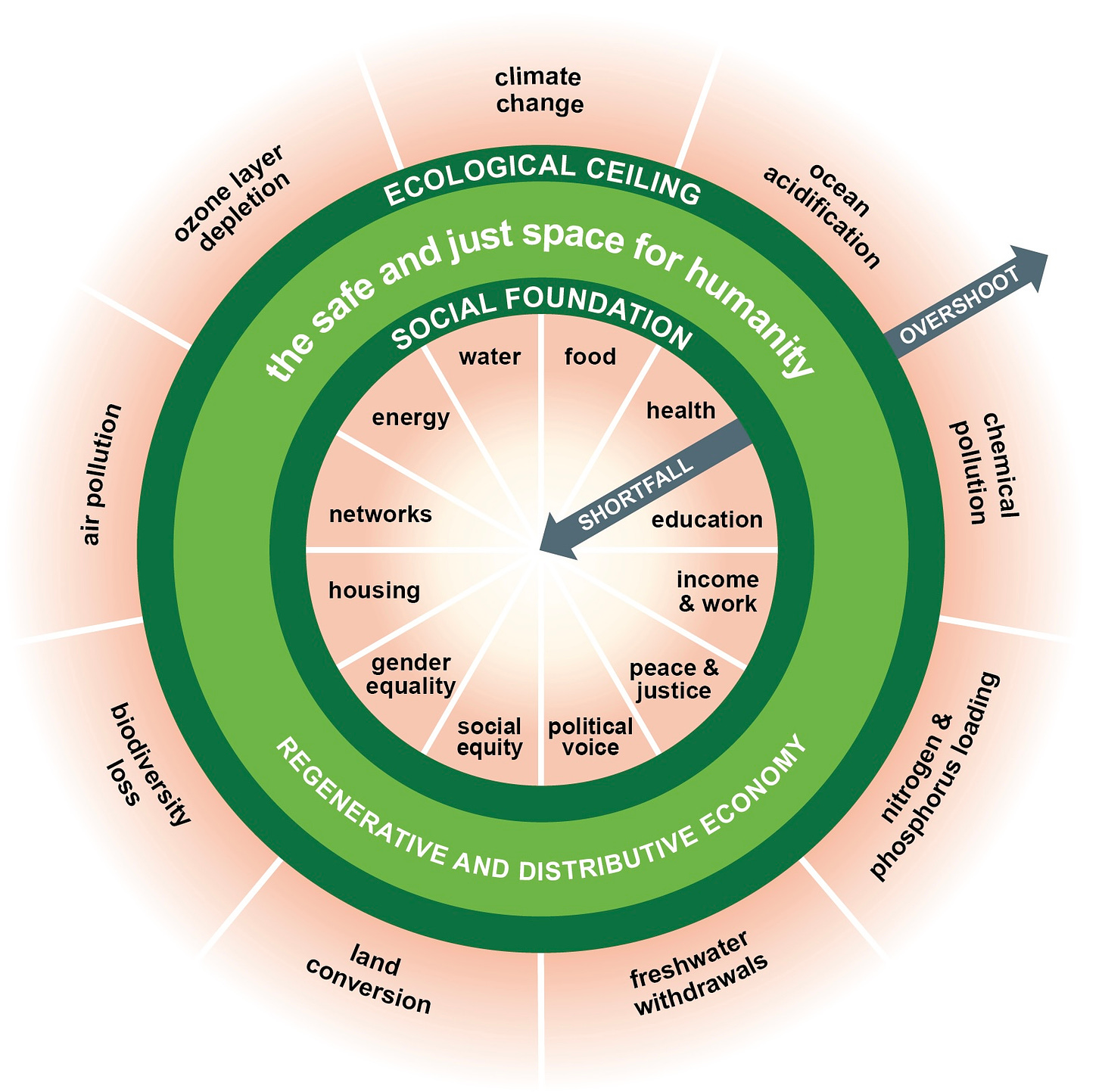I co-wrote—with my sometimes colleague Emma Bennett—a short piece on why focussing on uncertainty is not a useful way for organisations to imagine the future. It’s been published to the SOIF website, so I’m also sharing it here.
Talking about VUCA—Volatility, Uncertainty, Complexity, Ambiguity—is an unhelpful way to think about the future. It creates anxiety and it makes it harder for us to act. In practice, every purpose-driven business knows where it needs to get to to have a sustainable future. The challenge is how to get there.
Unsticking ourselves from VUCA
The world is more confusing than it used to be. Everyone can tick off the list: climate change, populism, pandemic, Ukraine, and more. But in the face of all of this, it is easy to feel stuck: to feel that, no matter what you do, it will be the wrong thing. Chess players have a word for this: zugzwang. You have to move, but once you have moved, you will be in a worse position.
These challenges affect the internal management of organisations as well. Technology was supposed to increase efficiency and improve customer management, but instead delivers supply chain disruption and customer noise.
Younger staff have different expectations about work and, often, different business values from their managers. People want to work for purposeful organisations, but the line between purpose and greenwashing can be thin.
In the face of this difficult, and different, operating environment, we are told that strategy is dead and planning is impossible. Agility and adaptation are said to be the answer. It’s all about volatility and uncertainty. Other acronyms tell a similar story.
But treating the world as if everything is uncertain, and that the best we can do is to respond to the unpredictable, forces us into inaction. The concept of VUCA makes us more anxious, rather than less anxious. It creates “a sense of over-stimulation and overload,” as Sandra Waddock of Boston College argues.
Anxiety and overload are a terrible combination. They prevent us from making meaningful choices. They lock us into incremental variations in business as usual even though we know that it is becoming ever harder to make business as usual work. Worse: this inaction is both a symptom and a cause of the worsening larger environment. You can’t address 21st century problems with 20th century tools.
The half truth about uncertainty
The notion that we are living in uncertain times is only a half-truth. Yes, we are living in uncertain times. But if we are interested in a future that is sustainable for our organisations — economically, socially, environmentally—the path to that future is surprisingly certain. Axa said at the time of the Paris Accord, “A four degree world is uninsurable”. We have learned since then that a two-degree world is probably uninsurable as well. Maybe even a one and a half degree world. This means that the target area for the future business is tightly defined by climate crisis and biodiversity loss. In business terms, we are trying to land the plane on an atoll in the middle of the ocean.

(Wake Island/Atoll. Photo by Blatant World. CC BY 2.0)
For values-driven, purposeful organisations—whether in the private, public or third sectors—the need for significant transformation in coming years is clear and certain. The societal, economic and environmental systems we operate within are under growing pressure, and technology innovation alone will not provide a silver bullet that allows business as usual to continue.
We know that new business models, new ways of navigating resource constraints and new ways of managing staff and stakeholders will be required. Many leaders are already grappling with the scale and reach of transformation needed, for example to meet net zero carbon targets within the constraints of existing assumptions and operating models.
Finding the future
We also know quite a lot about what the atoll looks like. Different organisations have described it well enough. For example, drawing on FutureFit’s open source benchmarking tool, we can see that the businesses that survive in a sustainable future need to be able to operate within the planetary boundaries, as well as economic and social boundaries.
The corporate business model of exporting external costs into the rest of the system is not sustainable in this future world. In effect, they become the equivalent of ‘doughnut’ companies, borrowing Kate Raworth’s economic model, operating in a safe space between the ecological ceiling and a viable social and economic floor.

(Kate Raworth’s doughnut model. Via Wikipedia.)
This is a pragmatic view as much as it is a moral one. Either we manage our way to businesses that are stable and viable, or the system will manage it for us through continued decline, even collapse.
Using strategic futures as a map
If the outlook is relatively certain, what remains uncertain is how you get there. Transformation is a complex journey that requires navigating a lot of legacy issues at the organisational level. This is where strategic foresight has particular value to add. Foresight helps organisations to identify opportunities to transform, and to identify and then harness the sources of agency and energy needed to get there.
Strategic futures work complements other types of business planning methods, but they come into their own when it is possible to articulate the shape of the future that needs to be realised. Although futurists often talk about probable futures, possible futures, and preferred futures, and this opens up uncertainty about the future, we are now only looking at one future: the future that is necessary to avoid collapse.
We can sketch out the operating principles of such a future business, even if some of the detail remains out of focus. And from the operating principles, we can also identify the building blocks that need to be in place to get there, the constraints that we have to manage, and the leverage points that we can use to accelerate the transition, using tools such as the Three Horizons Framework, actor mapping, backcasting, and so on.
Change is going to happen. The question for the future of business right now is whether we want to be the agents of change, or have change happen to us.
The PDF of this article can be downloaded from here.
——
A version of this article is also published on my Just Two Things Newsletter.
